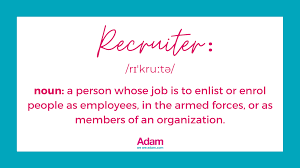
Mistakes are inevitable in business, especially if you’re new to entrepreneurship. While it’s completely okay to make mistakes and learn from them, taking preventive measures is even better. Learn from the setbacks of all the business owners who came before you! Small business owners tend to make many of the same mistakes, from neglecting their legal responsibilities to overlooking the importance of employee onboarding. Here are 5 common mistakes to avoid as you get your business off the ground.
Think your business is too small to worry about HR? Think again! Human resource management benefits small businesses in several ways. Fit Small Business explains that good HR practices (https://fitsmallbusiness.com/why-is-human-resources-important/) will help you secure top talent, improve employee retention, minimize miscommunication, boost productivity, and avoid compliance issues. You don’t need an internal HR team to enjoy these benefits. If you don’t have the time or resources to handle HR internally, consider outsourcing your HR needs to EBR HR Experts. Our HR consulting experts can help your small business establish strong HR programs, practices, and policies.
Avoiding Traditional Marketing Strategies
Today, many business owners focus all of their marketing efforts on digital strategies. Although digital marketing has incredible value to offer businesses of any size, traditional marketing methods are far from dead. Traditional advertising is still fantastic for raising brand awareness (https://wmkagency.com/blog/traditional-advertising-4-reasons-its-not-dead). Plus, offline advertisements tend to work great for local businesses and companies targeting older demographics.
Business cards are one form of traditional offline advertising that any entrepreneur can use to their advantage. They’re affordable, easy to distribute, great for events, and more visible than an email. Plus, business cards are easy to design when you use pre-made templates. You can find all kinds of tools that let you create business cards online even if you have zero design skills.
Doing Everything Yourself
As a small business owner, it’s normal to wear many hats. But you don’t have to do everything on your own. Often, you’ll get a better return on your investment by outsourcing extra work to freelancers or delegating tasks to employees. Delegate (https://ebrhrexperts.com/task-delegation-for-small-business-owners) time-consuming tasks or projects that require specific skill sets. For example, you can delegate data entry, employee recruitment, HR management, and customer service!
Classifying Employees Incorrectly
Do you know the penalties for misclassifying your employees? Whether or not it’s intentional (https://www.mbopartners.com/blog/misclassification-compliance/employee-misclassification-penalties/) misclassifying employees as independent contractors can put you at risk of paying back taxes and penalties in the future. Misclassifying employees could put you in violation of various wage, tax, and employment laws. Be proactive about protecting your company from worker misclassification with a defined plan in place for managing independent freelancers.
Not Establishing an Employee Onboarding Plan
Establishing a solid onboarding system is important whether you’re hiring employees or contractors. Without proper onboarding procedures (https://www.apollotechnical.com/why-onboarding-is-important) your business may experience poor employee engagement, increased turnover, and lost productivity. An onboarding plan will ensure your new hires receive the training, information, and resources they need to thrive in their new position. It should also help your new employees understand your company culture and how it aligns with their personal values. Create an employee onboarding program designed to support your new employees for at least their first 90 days at your company.
Business owners make all kinds of mistakes. Often, mistakes create valuable learning opportunities that can help you become a better entrepreneur. While you shouldn’t fear mistakes, you can take steps to avoid disastrous and costly consequences. Learn from other business owners so you can avoid setbacks as you grow your new business.
Could you use some HR advice? EBR HR Experts (EBRHRExperts.com)supports small businesses with a variety of HR services, including management training, employee handbooks, and HR policies. Contact us today! 972-855-8009




